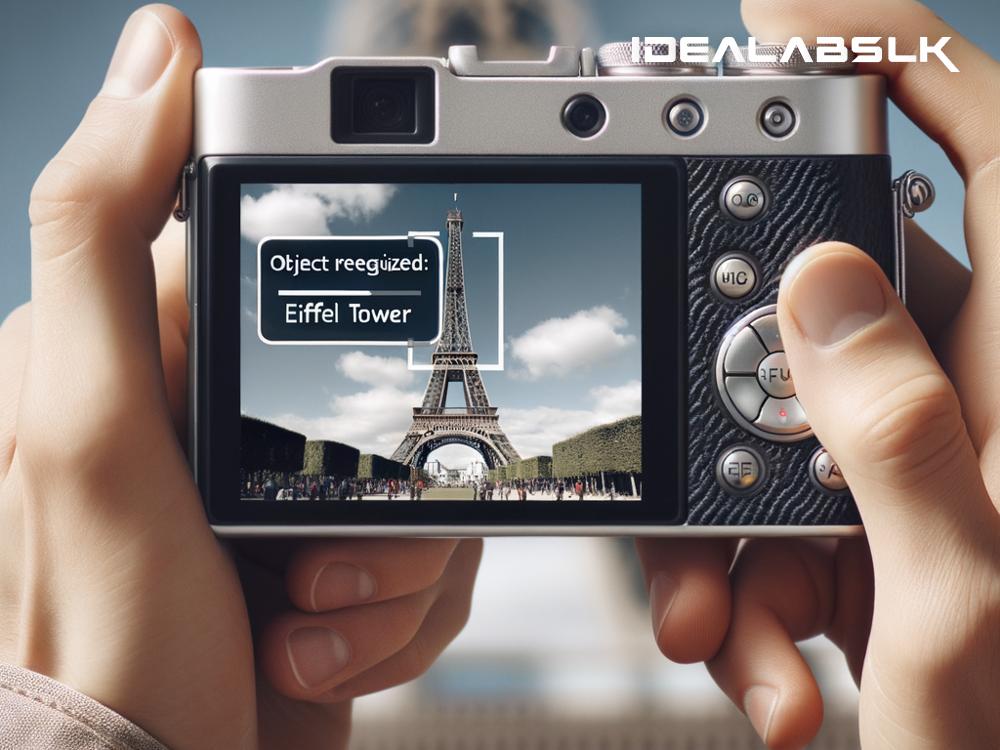Title: How AI is Revolutionizing Image Recognition in Pocket-Sized Cameras
In a world that increasingly appreciates the value of high-quality images, from capturing life's everyday moments to professional photography, the technology behind cameras continues to evolve. One of the most exciting advancements? The integration of Artificial Intelligence (AI) into the compact cameras we carry in our pockets. This powerful combination is revolutionizing the way we capture images in real-time, making it easier for everyone to snap professional-grade photos without the need for bulky equipment or extensive photography knowledge. But how exactly does AI power real-time image recognition in these compact devices? Let's dive in and explore.
Simplifying the Science of AI in Cameras
At its core, Artificial Intelligence in cameras is about teaching these devices to 'see' and understand what they're looking at, much like a human would. This process involves AI algorithms, which are complex sets of rules and models the camera uses to process and analyze the images it captures in real-time.
Imagine snapping a photo of your pet dog playing in the park. With AI, your camera can recognize not just that there's an animal in the frame, but it can often identify that it's a dog, and maybe even its breed! It does this by comparing the image data with countless other 'known' images in its database, making intelligent guesses based on patterns and similarities.
The Magic of Machine Learning
A key component of AI in cameras is something called Machine Learning (ML). ML allows the camera to learn from the vast amounts of data it's exposed to, improving its ability to recognize and process images over time. It's like how we learn from our experiences. The more photos the camera analyzes, the smarter and more accurate it becomes.
Thanks to ML, AI-powered compact cameras can adjust settings like focus, exposure, and color balance in real-time, based on the scene's context. This means that whether you're taking photos in bright sunlight or low-light conditions, the camera can automatically make adjustments to ensure the best possible outcome.
Real-Time Image Recognition: A Closer Look
Real-time image recognition is where AI truly shines in compact cameras. This feature allows the camera to identify and categorize objects as soon as they appear in the viewfinder. From landscapes and faces to specific objects like cars and buildings, AI helps your camera understand what it's looking at, instantly.
But how does this benefit you, the user? Well, with AI's real-time image recognition, your camera can apply the most suitable settings for what you're trying to capture, even before you press the shutter button. For portrait photos, it can automatically enhance skin tones; for landscapes, it can boost colors to make the scenery pop. All this happens in the blink of an eye, ensuring your photos are beautifully captured, every time.
Beyond Image Recognition
AI's capabilities in compact cameras go beyond mere image recognition. Advanced features like automatic scene detection, object tracking, and even predicting where a moving subject will be next are becoming standard. This predictive ability is particularly useful in action photography, where capturing the perfect moment is everything.
Moreover, AI is making editing easier too. Many AI-powered cameras offer features like object removal, where you can erase unwanted items from your photos, or style transfer, which allows you to apply the visual style of one image to another, all within the camera itself.
A Look into the Future
The future of AI in compact cameras is as promising as it is exciting. We're looking at developments that could include even better low-light performance, 3D modeling capabilities, and AI-driven composition suggestions, offering tips to photographers on how to frame their shots for maximum impact.
In essence, AI is making photography more accessible and enjoyable, allowing more people to capture the beauty of the world around them with a level of quality that was once only achievable with professional equipment.
Conclusion
AI's integration into compact cameras represents a significant leap forward in making sophisticated photography accessible to everyone. By harnessing the power of real-time image recognition and machine learning, these pocket-sized devices are not just capturing images; they're understanding them, transforming the way we approach photography. As technology continues to evolve, we can only expect even more groundbreaking features that will further elevate our photographic experiences, all thanks to the marvels of AI.

